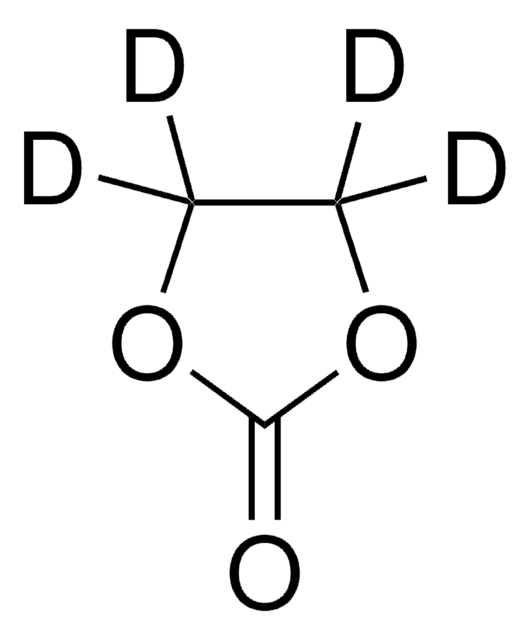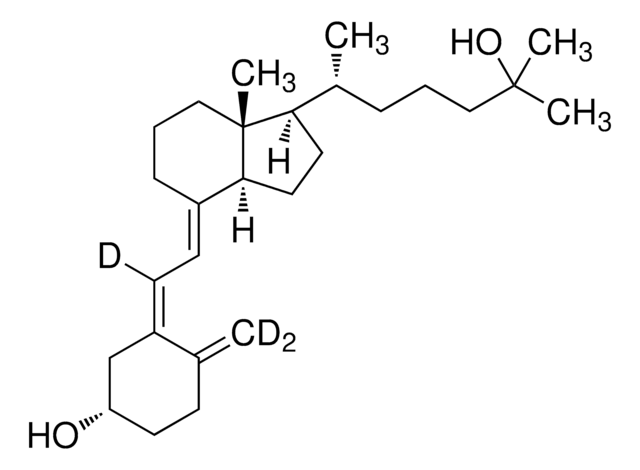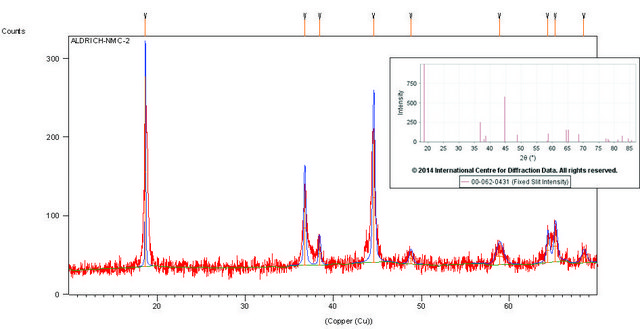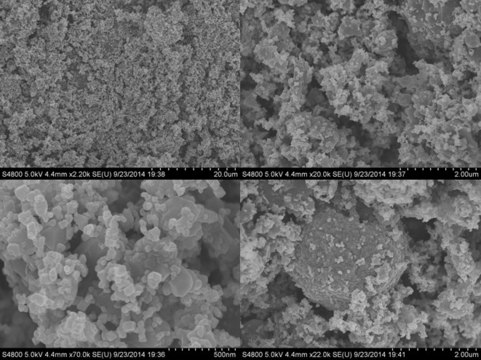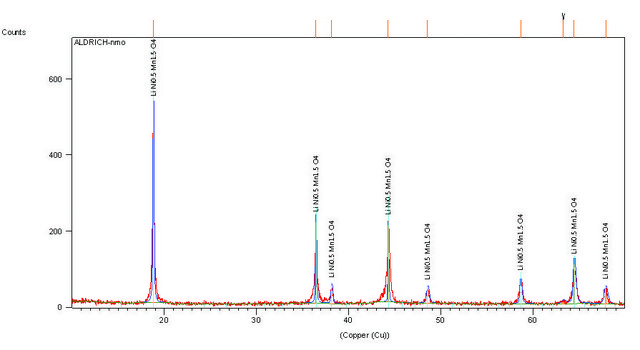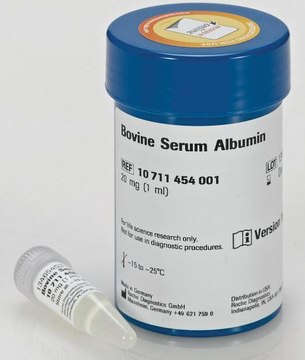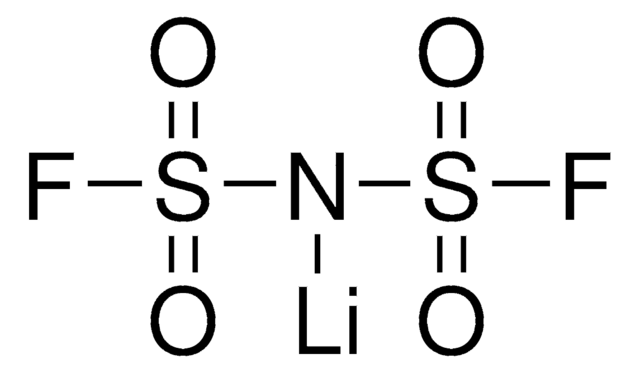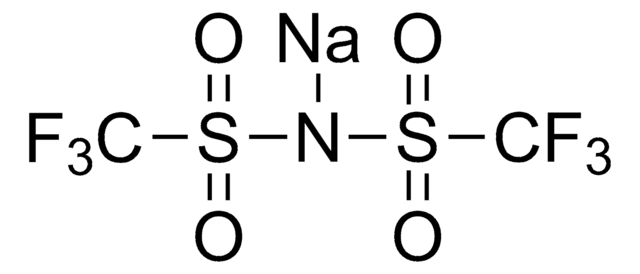765198
Lithium manganese nickel oxide
electrode sheet, aluminum substrate, size 5 in. × 10 in.
Recommended Products
grade
battery grade
description
Nominal Voltage: 4.7 V, Li/Li+
Assay
≥98%
form
solid
composition
loading, ≥80%
greener alternative product characteristics
Design for Energy Efficiency
Learn more about the Principles of Green Chemistry.
sustainability
Greener Alternative Product
extent of labeling
≥80% loading
size
5 in. × 10 in.
thickness
25-50 μm
particle size
4-7 μm (typical)
capacity
115 mAh/g(minimum)
125 mAh/g(nominal at 0.1C)
mp
>1000 °C
application(s)
battery manufacturing
greener alternative category
, Enabling
SMILES string
[Li+].[Li+].[O-][Mn]=O.[O-][Ni]=O.O=[Mn]=O.O=[Mn]=O
InChI
1S/2Li.3Mn.Ni.8O/q2*+1;;;;;;;;;;;2*-1
InChI key
NTWFBJKNXFUJHM-UHFFFAOYSA-N
General description
Application
The LMNO casted electrode sheets can be cut into appropriate size and is ready to be used in lithium ion batteries.
Other Notes
Operating Condiditons:
- Recommended maximum charge voltage: 5.0 V vs Li/Li+
- Recommended maximum charge current: 5 C
- Recommended cut-off voltage for discharge: 3.5 V vs Li/Li+
- Recommended maximum discharge current: 5 C
- Recommended charge method: constant current - constant voltage
Signal Word
Warning
Hazard Statements
Precautionary Statements
Hazard Classifications
Carc. 2 - Skin Sens. 1
WGK
WGK 3
Flash Point(F)
Not applicable
Flash Point(C)
Not applicable
Regulatory Information
Certificates of Analysis (COA)
Search for Certificates of Analysis (COA) by entering the products Lot/Batch Number. Lot and Batch Numbers can be found on a product’s label following the words ‘Lot’ or ‘Batch’.
Already Own This Product?
Find documentation for the products that you have recently purchased in the Document Library.
Articles
Professor Qiao's review explores stable microstructures for lithium metal fluoride batteries, advancing energy storage technologies.
Solid oxide fuel cells and electrolyzers show potential for chemical-to-electrical energy conversion, despite early development stages.
Li-ion batteries are currently the focus of numerous research efforts with applications designed to reduce carbon-based emissions and improve energy storage capabilities.
Lithium-ion batteries offer high energy density and cyclic performance for portable electronic devices.
Our team of scientists has experience in all areas of research including Life Science, Material Science, Chemical Synthesis, Chromatography, Analytical and many others.
Contact Technical Service
